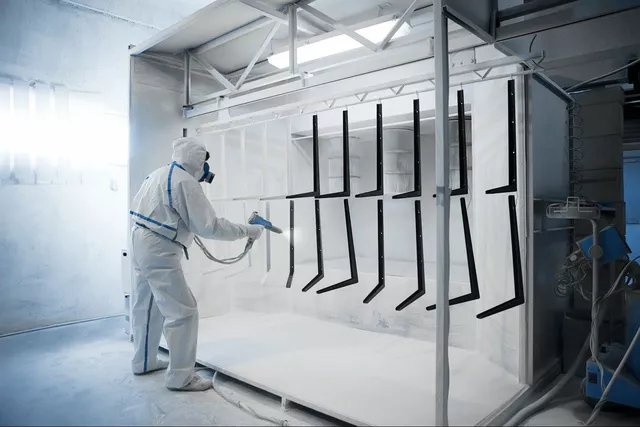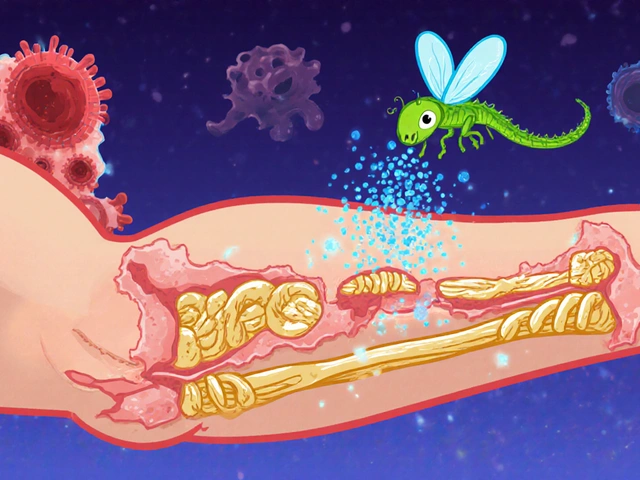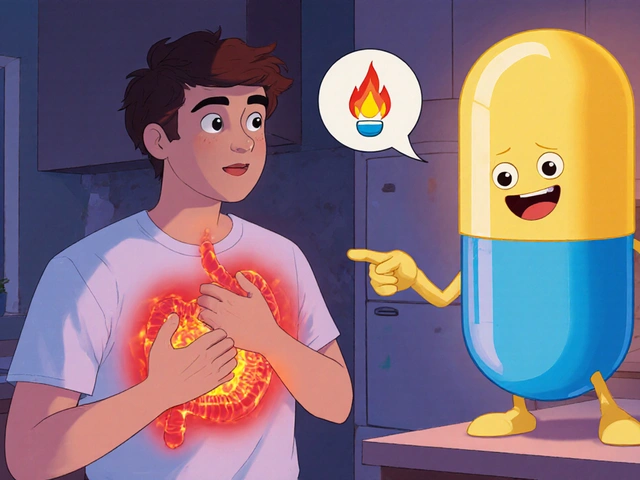Secondary Hyperparathyroidism Risk Assessment Tool
Imagine your doctor says your parathyroid hormone (PTH) is high, but imaging shows nothing wrong with the glands. That scenario points to secondary hyperparathyroidism, a condition where the body’s calcium‑phosphate balance goes off‑track and the parathyroids over‑react. If you’ve never heard of it, you’re not alone-most people only learn about it when they have chronic kidney disease (CKD) or related bone problems. This guide breaks down the biggest risk factors, shows why they matter, and gives you practical steps to keep the problem at bay.
What is Secondary Hyperparathyroidism?
Secondary Hyperparathyroidism is a medical condition in which the parathyroid glands secrete excess PTH in response to low calcium, high phosphate, or vitamin D deficiency, rather than a primary gland disorder. It differs from primary hyperparathyroidism, where the glands themselves become tumorous or hyperactive. In the secondary form, the glands are doing what they’re supposed to-trying to restore balance-but the underlying triggers keep them fired up.
Why It Happens: Core Risk Factors
Three big players drive the disease: impaired kidney function, vitamin D deficiency, and phosphate overload. Each one nudges calcium levels down or phosphate levels up, and the parathyroids respond by releasing more PTH. Understanding these drivers helps you see where prevention can start.
Kidney Disease and Phosphate Retention
Chronic Kidney Disease is a progressive loss of renal function that leads to waste buildup and mineral imbalances. When kidneys can’t filter phosphate efficiently, that mineral builds up in the blood. High serum phosphate pulls calcium out of the bloodstream, creating a false signal of low calcium. The parathyroids react by cranking up PTH, which then tries to mobilize calcium from bones, weakening them over time.
Even early‑stage CKD (stage 2‑3) can cause subtle phosphate shifts, so regular labs are crucial. If you’re on dialysis, the risk spikes because the treatment itself can’t fully normalize phosphate without medication.
Vitamin D Deficiency and Calcium Balance
Vitamin D deficiency is a lack of sufficient 25‑hydroxyvitamin D in the blood, which reduces intestinal calcium absorption and impairs bone health. Vitamin D helps the gut absorb calcium; without it, calcium levels dip, prompting the parathyroids to release more PTH. This loop is especially common in people who spend most of their time indoors, wear sunscreen all day, or have malabsorption disorders.
Seeing a 25‑hydroxyvitamin D level below 20ng/mL is a red flag. In CKD patients, the kidneys also lose the ability to convert vitamin D to its active form, compounding the problem.

Medications That Can Trigger It
Some drugs unintentionally raise PTH by affecting calcium or phosphate. Calcimimetics are agents that increase the sensitivity of the calcium‑sensing receptor, thereby lowering PTH secretion. While they’re used to treat secondary hyperparathyroidism, an abrupt stop can cause rebound spikes.
On the flip side, certain anticonvulsants (like phenytoin) and glucocorticoids can lower vitamin D levels, nudging the body toward secondary hyperparathyroidism. If you’re on any long‑term medication, ask your doctor about its impact on calcium‑phosphate metabolism.
Lifestyle and Dietary Triggers
Even without disease, diet can swing the balance. High‑phosphate foods-processed meats, sodas, and many cheese products-can flood the bloodstream with phosphate. Meanwhile, low calcium intake (<800mg/day) removes the buffer that keeps PTH in check. Alcohol excess and smoking also interfere with vitamin D metabolism, further raising risk.
People on low‑protein renal diets sometimes over‑compensate with phosphate‑rich supplements, unintentionally feeding the problem.
Prevention Strategies: Lifestyle First
The safest way to keep secondary hyperparathyroidism at bay starts with everyday choices:
- Aim for 1,000‑1,200mg of calcium daily-dairy, fortified plant milks, or leafy greens work well.
- Get 800‑1,000IU of vitamin D3 each day, especially if you live north of the 40° latitude or spend most of your time indoors.
- Limit foods high in added phosphate: avoid cola drinks, processed cheese, and excessive meat‑based protein powders.
- Stay active. Weight‑bearing exercise improves bone density and helps the body use calcium more efficiently.
- Schedule regular blood panels (PTH, calcium, phosphate, vitamin D) if you have CKD or a family history of mineral disorders.
Prevention Strategies: Medications and Therapies
When lifestyle tweaks aren’t enough, clinicians turn to targeted therapies. Below is a quick comparison of the most common options.
| Strategy | Mechanism | Typical Use | Pros | Cons |
|---|---|---|---|---|
| Dietary Modification | Reduces phosphate load, boosts calcium/vitamin D intake | All patients, especially early CKD | Low cost, no side effects | Requires adherence, effect may be modest |
| Phosphate Binders | Bind intestinal phosphate, preventing absorption | CKD stage 3‑5, on dialysis | Effective phosphate control | GI upset, pill burden |
| Active Vitamin D Analogs (e.g., calcitriol) | Enhances calcium absorption, suppresses PTH | Patients with low 1,25‑OH2‑D | Rapid PTH reduction | Risk of hypercalcemia |
| Calcimimetics are drugs like cinacalcet that increase calcium‑sensing receptor sensitivity, lowering PTH secretion | Tricks receptor into thinking calcium is higher | Advanced CKD or refractory PTH | Effective without raising calcium | Cost, potential nausea |
| Parathyroidectomy | Removes overactive glands | Severe, medication‑refractory cases | Definitive cure | Surgical risk, hypocalcemia post‑op |
In most cases, doctors start with diet and phosphate binders, then add vitamin D analogs or calcimimetics if labs stay high. Surgery is the last resort.

Monitoring and Early Detection
Early detection hinges on regular labs. The key numbers to watch are:
- PTH: >70pg/mL in CKD suggests secondary hyperparathyroidism.
- Serum calcium: low‑normal or low.
- Serum phosphate: high‑normal or elevated.
- 25‑hydroxyvitamin D: <20ng/mL is deficient.
- Alkaline phosphatase (bone isoform): elevated levels flag high bone turnover.
When these values drift, adjust diet or medication before bone pain or vascular calcification set in. For dialysis patients, labs are usually checked monthly; for others, a 6‑month interval works.
Common Pitfalls and How to Avoid Them
Even seasoned clinicians miss a few traps:
- Phosphate retention is the accumulation of phosphate in the blood due to reduced renal excretion, which can trigger secondary hyperparathyroidism. Forgetting to count hidden phosphates in processed foods leads to uncontrolled PTH.
- Assuming normal calcium means the problem is solved-calcium can appear normal while phosphate is high, still prompting PTH rise.
- Stopping calcimimetics abruptly; the rebound PTH spike can be dramatic.
- Over‑supplementing vitamin D without checking calcium-hypercalcemia can worsen vascular calcification.
Keeping a simple checklist helps prevent these slip‑ups.
Quick Checklist for Patients and Clinicians
- Review diet for hidden phosphate (cola, processed cheese, protein powders).
- Confirm calcium intake meets 1,000mg/day.
- Check 25‑hydroxyvitamin D at least twice a year.
- Order PTH, calcium, phosphate, alkaline phosphatase every 3-6months.
- If PTH stays >150pg/mL, consider adding a calcimimetic or active vitamin D.
- Discuss surgical referral only after medical therapy fails for 6-12months.
Frequently Asked Questions
What is the main difference between primary and secondary hyperparathyroidism?
Primary hyperparathyroidism starts inside the parathyroid glands (often a tumor) and raises PTH regardless of calcium levels. Secondary hyperparathyroidism is a response to low calcium, high phosphate, or vitamin D deficiency, so the glands are reacting to an external problem.
Can I prevent secondary hyperparathyroidism without medication?
Yes, many people keep PTH normal by eating enough calcium, limiting phosphate‑rich processed foods, getting sufficient sun or vitamin D supplements, and staying active. Regular labs catch early shifts before medication is needed.
Why do dialysis patients have such high rates of secondary hyperparathyroidism?
Dialysis removes waste but cannot fully clear phosphate, and the kidneys can’t activate vitamin D. The combination forces the parathyroids to work overtime, pushing PTH levels up.
Is surgery ever the best option?
Parathyroidectomy is reserved for patients whose PTH stays very high despite optimal medical therapy, or when bone pain and vascular calcifications become severe. It’s curative but carries surgical risks.
How often should I get blood tests if I have early‑stage CKD?
Every six months is a good baseline for calcium, phosphate, PTH, and vitamin D. If any value trends upward, switch to quarterly testing until stable.







ADETUNJI ADEPOJU
October 15, 2025 AT 21:29Ah, the delightful cascade of hyperphosphatemia and secondary hyperparathyroidism – a textbook case of iatrogenic irony, where renal insufficiency becomes the inadvertent endocrinologist. One might suggest a diet low in phosphate binders, yet the proliferation of processed foods renders adherence a Sisyphean task.
Janae Johnson
November 2, 2025 AT 20:29Contrary to the prevailing dogma, the rigidity of phosphate restriction is not universally substantiated; moderate dietary phosphate, particularly from naturally occurring sources, does not inexorably precipitate elevated PTH in early renal compromise. A nuanced appraisal of individual biochemical trajectories is advisable.
Kayla Charles
November 20, 2025 AT 20:29Hey folks, let’s unpack this together because navigating secondary hyperparathyroidism can feel like deciphering a cryptic code. First, understand that your kidneys act as the primary regulators of phosphate clearance, and when they falter, the downstream hormonal response kicks in. Vitamin D status is the silent partner in this dance; insufficient 25‑hydroxyvitamin D reduces intestinal calcium uptake, prompting the parathyroids to overcompensate. It’s also worth noting that not all phosphate binders are created equal-some have a better side‑effect profile and adherence rates. If you’re on dialysis, regularly scheduled labs every three months can catch subtle shifts before they become entrenched. Remember, lifestyle tweaks such as swapping soda for water and opting for fresh produce over processed meats wield real influence. Ultimately, fostering a collaborative dialogue with your nephrologist empowers you to tailor therapy that aligns with your unique metabolic landscape.
David McClone
December 8, 2025 AT 20:29Well, isn’t it just peachy that our bodies decide to throw a hormonal tantrum because we enjoy a nice, phosphate‑laden cheeseburger? The parathyroids, ever the drama queens, sense a dip in calcium and crank up PTH as if they’re auditioning for a Broadway show. Meanwhile, the kidneys sit there like a lazy bouncer, refusing to evict excess phosphate from the party. And hey, let’s not forget vitamin D, the unsung hero that decides whether calcium gets the VIP pass. All this because we thought “processed food convenience” was a worthy life goal. If you’re looking for a shortcut, maybe consider actually reading the label before you demolish that soda.